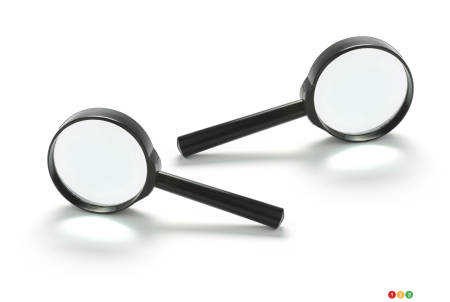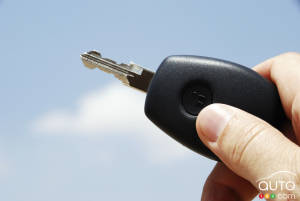Defining Your Budget
Before you start shopping for a new vehicle, you need to find out what your purchasing power is. In other words, what part of your monthly revenues can you spend on the purchase or lease of a new vehicle? This amount must factor in all related expenses like insurance costs, registration fees as well as complementary products and accessories (winter tires, etc.). Such elements vary from one vehicle to another.
Your budget should also take into account the residual value of your current vehicle, which you probably want to sell or trade in. Naturally, this value will influence the final transaction and therefore the monthly amount you will have to spend.
Defining Your Needs
Buying a new vehicle is a decision based on specific needs, not only its future driver's but also those of the passengers - big or small, old or young - who will sit on board.
Moreover, while they shouldn't dictate your final selection, everyone's personal aspirations should also be considered in order to make the long-term driving experience more enjoyable to all.
The Type of Vehicle
Now that you have clearly defined your budget and needs, choosing the type of vehicle will prove easier. Will it be a sedan, a minivan (small or full-size), a pickup truck or a sport utility vehicule?
One of the main factors that will determine the right type of vehicle is the number of people you will be carrying. For example, if you have four children, even the largest sedan won't accommodate everyone, as they only offer up to five seats. Consequently, you will have to turn to a seven- or eight-passenger minivan or SUV. Likewise, if you need to tow a trailer or a boat on a regular basis, the vehicle's towing capacity will be extremely important.
Two- or four-wheel drive?
More and more automakers are offering four-wheel drive (4WD) vehicles. Yet, in most cases, two-wheel drive (2WD) vehicles work just fine.
So, if you live in the city or in a close suburb and you mainly drive on urban roads (even during winter), a front- or rear-wheel drive (FWD/RWD) vehicle could certainly do the trick… as long as it's fitted with good winter tires in the colder months!
On the other hand, if you regularly drive on small byroads and dirt trails, which are not always equally maintained, a 4WD vehicle would be more appropriate.
Transmission
There are currently various types of manual and automatic transmissions on the automotive market, all with four gears or more.
Usually, a manual gearbox proves to be more fuel efficient than an autobox. In addition, transmissions that rely on more gears offer a smoother power delivery, thus requiring less fuel.
On the flip side, remember that vehicles equipped with manual transmissions are not unanimously appreciated by city commuters. Indeed, most of them don't benefit from a Hill-Start Assist system.
Safety Features
Active and passive safety features found in today's vehicles are increasingly popular and sophisticated. While they are available in more and more entry-level models, premium vehicles still offer a more extensive list of safety systems.
In other words, if you have a small family and you're looking for the safest vehicle out there (traction and stability controls, side and curtain airbags, etc.), expect to pay a few thousands more.
Power VS Fuel Economy
The engine selection will not only impact your vehicle's performance but also its fuel economy. The latter can become one of the main deciding factors when buying or leasing a new vehicle, especially if you cover more than 12,000 kilometers year in and year out. You will have to make an important decision here.
More often than not, fuel consumption increases with the number of cylinders and the weight of the vehicle.
Automakers are offering more and more hybrids - vehicles that use a combustion engine AND at least one electric motor. Their fuel consumption is usually reduced and they produce a lot less greenhouse gas emissions.
To find out the fuel economy of any vehicle available on the market, please refer to EnergyGuide, Natural Resources Canada's fuel consumption guide.
Associated Products
Upon signing a contract to purchase or lease a new vehicle, the dealer will offer you various products like extended warranties, insurances, a remote starter, a stainproof treatment, etc.
Not all these products are necessary; only buy the ones you truly need and can afford.
Warranties
In general, the basic warranty for a vehicle is good for three years or 60,000 kilometers. Some manufacturers will also cover your powertrain for up to five years or 100,000 kilometers.
Then there are specific warranties on the engine and others that cover rust damages. A number of automakers also provide roadside assistance without any additional cost. This sort of benefits can become a strong selling point.
Dealers offer additional coverage to extend the manufacturer's warranties, but the required premiums are usually high.
Insurances
Before signing a contract at the dealership, call your insurer and inquire about the premium you will have to pay. The amount will be based on the type of vehicle you will have purchased (for instance, a sportier model usually means a higher insurance premium).
Some vehicles are more coveted by thieves, which explains why some insurance companies might require that you equip yours with a satellite-based tracking system. A simple phone call could clear things up and prevent a lot of bad surprises.
Dealers can also offer a replacement value clause for multiple years. This type of coverage is also available at your insurer, albeit under different terms and conditions.
If you agree to the dealer's offer, make sure that the replacement value clause is deleted from the contract with your insurer; otherwise, you will pay for it at both places.





